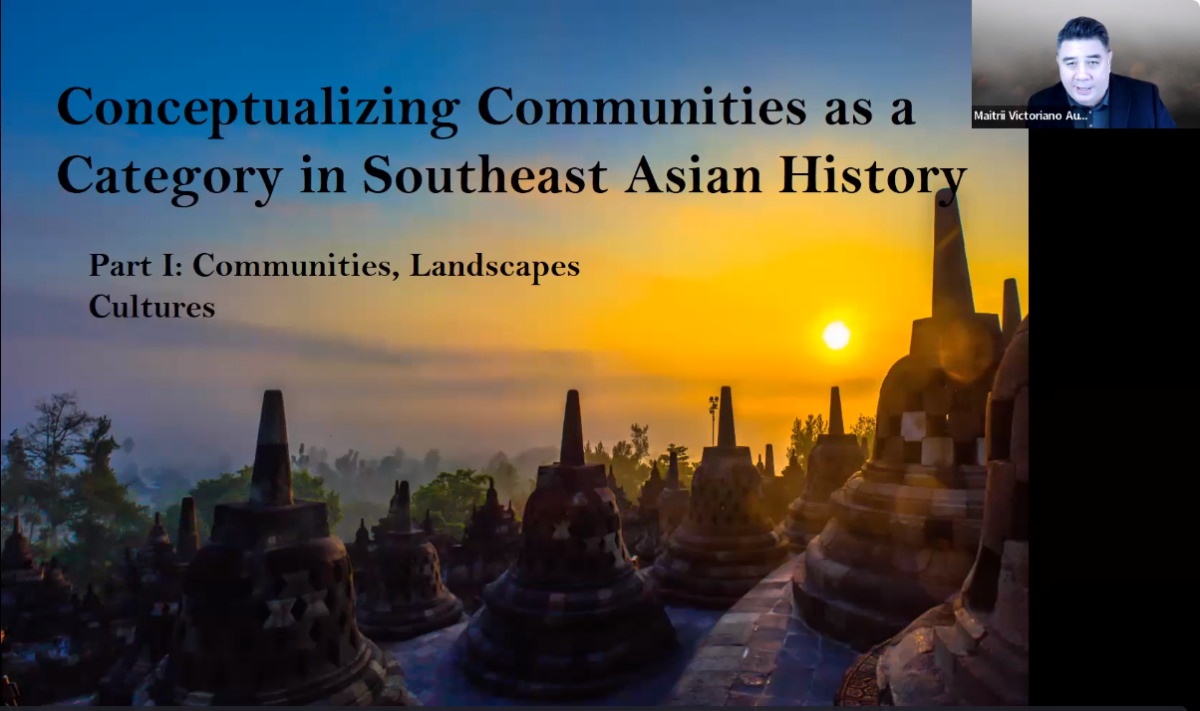On April 19, 2022, the Southeast Asian Studies research group of the Institute for International and Area Studies (IIAS) of Tsinghua University hosted the first lecture of the lecture series entitled “Southeast Asia: Communities and Histories”. The lecture was delivered by Maitrii Aung-Thwin, Associate Professor of History and Deputy Director of Asia Research Institute at the National University of Singapore and presided over by Wang Lingqi, a Ph.D candidate of the Southeast Asian Studies research group, IIAS. More than 100 faculty members and students from Tsinghua University, Peking University, Yunnan University and other universities and research institutes at home and abroad attended the lecture.
The lecture was entitled “Conceptualizing Communities as a Category in Southeast Asian History”. Professor Aung-Thwin firstly expressed his gratitude to the IIAS for giving him the opportunity to introduce to Chinese scholars and students Southeast Asian historical studies from a community perspective. He pointed out that the lecture series would not only present existing studies on Southeast Asian history, but also update its narratives and then provide a reference perspective for teaching and inheriting the history. Drawing on the term and concept of “Southeast Asia”, Professor Aung-Thwin indicated that this fertile land between China and South Asia has been playing the role of “connectiveness” in all ages, which has made “diversity and inclusiveness” a distinct feature of the region. Interpreting the historical development of Southeast Asia from the perspective of community and mobility will help us understand the performance of Southeast Asia in the economic society and international relations today.
Professor Aung-Thwin elaborated the rich and diverse communities, landscapes and cultures in Southeast Asia. In terms of communities, he said that a key feature of the social structure in Southeast Asian history is the prevalence of “patron-client” relationships. In the traditional Southeast Asian society, community leaders provided patronage to their subordinates, who were personally loyal to the leaders rather than beholden to an institution or class. Such special exchange relationships of the traditional society did not disappear with the emergence of modern countries, but continued to exist in various forms and became an important factor in the political development of modern countries in Southeast Asia. In terms of landscapes, Professor Aung-Thwin divided Southeast Asia into three parts: island, mainland and highland. The development of island area is closely related to Marine trade, while mainland area is more dependent on agricultural cultivation. Highland is a special region of Southeast Asia. Highland communities in Southeast Asia can be regarded as little villages in the sea of the mountains. Therefore, the highlands in Southeast Asia feature cultural diversity and mutual independence. In terms of cultures, he highlighted the diverse and integrated religious beliefs of Southeast Asia. Throughout history, Southeast Asia has experienced the periods of Indianization, Chinese civilization spreading, Islamization and western colonization, during which different external civilizations influenced the religious culture of Southeast Asia, and then integrated with the local beliefs to develop a unique belief system. Religious belief and social structure in Southeast Asia have been closely linked up to jointly promote the development and integration of different communities with the change of times and the deepening of human mobility. This lecture series will give a new interpretation of Southeast Asian history from a community perspective, with the aim of enriching the audience’s understanding of the history and current situation of Southeast Asia.
After the lecture, Professor Aung-Thwin discussed with audience onsite and online about the integration of Southeast Asian history, the cultural connection between Myanma, South Asia and Southeast Asia, the “patron-client” relationships in contemporary Southeast Asia, and the ethnic and cultural diversity of Zomia in Southeast Asia. Wang Lingqi concluded the lecture by stating briefly that while beginners may not know how to comprehend the complicated situations in Southeast Asia, Professor Aung-Thwin’s wonderful narration had provided the audience with the possibility of tracing the threads and traces in Southeast Asian history instead of one-dimensional and essential narratives.

Maitrii Aung-Thwin is an associate professor in the Department of History and Deputy Director of Asia Research Institute (ARI) at the National University of Singapore. His research interests include nation-state building, identity, public history, infrastructure and Buddhist networks in Southeast and South Asia. He is the author of the monograph The Return of the Galon King: History, Law, and Rebellion in Colonial Burma, and the co-author of A History of Myanmar since Ancient Times: Traditions and Transformations, A New History of Southeast Asia, etc.
Edited by: Song Tianyun
Proofread by: Southeast Asian Studies research group
Typeset by: Cheng Yao




